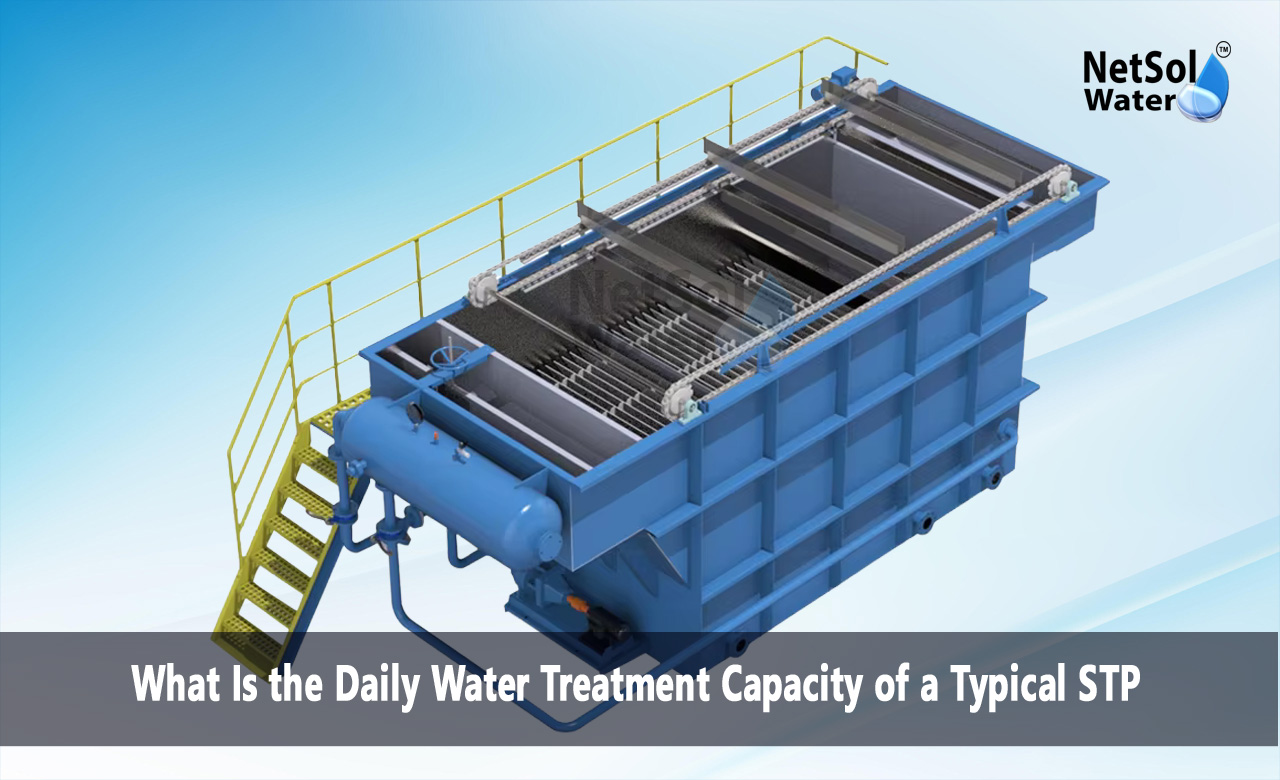Sewage treatment plants handle wastewater and treat it to environmental levels before they release or reuse it. Daily water treatment capacity, or how much wastewater a given STP can treat per day, is one of the most significant determinants of an STP. It is extremely important in establishing whether an STP can serve a specific building, industry, or municipality. In this blog, we’ll discuss what determines the daily water treatment capacity of a typical STP and how it can impact wastewater management.
What Is the Daily Water Treatment Capacity of a Typical STP?
The 24-hr water-treatment capacity of a normal STP is the amount of wastewater that a plant can treat in a day (expressed preferably in kilolitres per day i.e. KLD). The capacity of a typical STP to treat daily water varies depending on several factors such as the size of the STP, the population required to be served and the nature of wastes (sewage, industrial wastes, etc.) that will be treated by the STP.
· Small-Scale STPs: These are of the size range 10 KLD to 50 KLD, they can be utilized for small residential apartments, small commercial complexes, or single industrial units.
· Medium-Scale STPs: They have capacities from 50 KLD to 250 KLD and can be used in large apartment complexes, schools, hospitals, hotels and medium industries.
· Large-Scale STPs: For townships, industrial estates or giant commercial complexes, water treatment capacity in a shared STP may vary from 500 KLD to several hundreds of KLD depending upon the magnitude of the wastewater produced.
The treatment capacity per day determines the way in which effectively an STP processes and treats wastewater without overflows or under-treatment. It determines that the treated water must be within permissible discharge limits or adequate for reuse in non-potable applications like landscaping or industrial use.
Factors That Determine the Daily Water Treatment Capacity
Severalfactors determine the daily water treatment capacity of a typical STP:
· Size and Population Served: Larger size structures with more numbers of inhabitants or industries with higher wastewater production require larger STPs to handle the capacity.
· Nature of Wastewater: Industrial wastewater generally requires superior treatment, and this could reduce the total capacity of an STP if domestic sewage is to be treated.
· Technology Used: The technology used in an STP, such as membrane filtration or biological treatment, can decide its capacity and efficiency of treatment. New technologies can ensure better treatment of high volumes of wastewater.
Operation Based on Daily Water Treatment Capacity
The water treatment capacity of an average STP is not only in volume but also affects the mode of operation of the system. Running a sewage treatment plant in excesscapacity leads to compromised treatment, system failure, or contaminate the environment. Alternatively, running an STP at less than capacity results in ineffective use, wherein the plant facilities (e.g., energy or chemicals) are not put into use for the best return.
It should be compared with the water treatment requirement of the building or industrial unit to ensure its proper functioning. It is the reason why proper assessment of wastewater generation and usage is essential before finalizing STP selection.
Benefits of Properly Sized STPs
Choosing an STP with appropriate daily water treatment capacity has numerous benefits:
· Improved Treatment Efficiency: The systems of size as required provide efficient treatment of the wastewater according to environmental norms.
· Economy: Excess costs are caused by over-sized systems, whereas undersized systems cause issues during operation and additional costs in system sizing upgradation.
· Meeting Regulations: Being compliant with regional environmental regulations is a requirement, and an STP of required capacity ensures conformance to rules for water release or reuse.
· Sustainability: Appropriate sized STP can recycle treated water for non-potable applications like irrigation, saving fresh water resources.
Conclusion
The daily water treatment capacity of a typical STP plays a significant role in determining its suitability for different applications.Determining the volume of wastewater and selecting a fitting capacity for the system guarantees the effective functioning of the sewage treatment plant, meets the regulatory standards, and aids in the water's sustainable management. Choose a correct STP capacity to guarantee that the system does not perform inadequately or become overloaded.
Do you need an advice or assistance on selecting the best water and waste water treatment unit? We have solutions for all your problems!
Let us know your problem, our experts will make sure that it goes away.
For an assistance or related query,
Call on +91-9650608473 Or write us at enquiry@netsolwater.com



